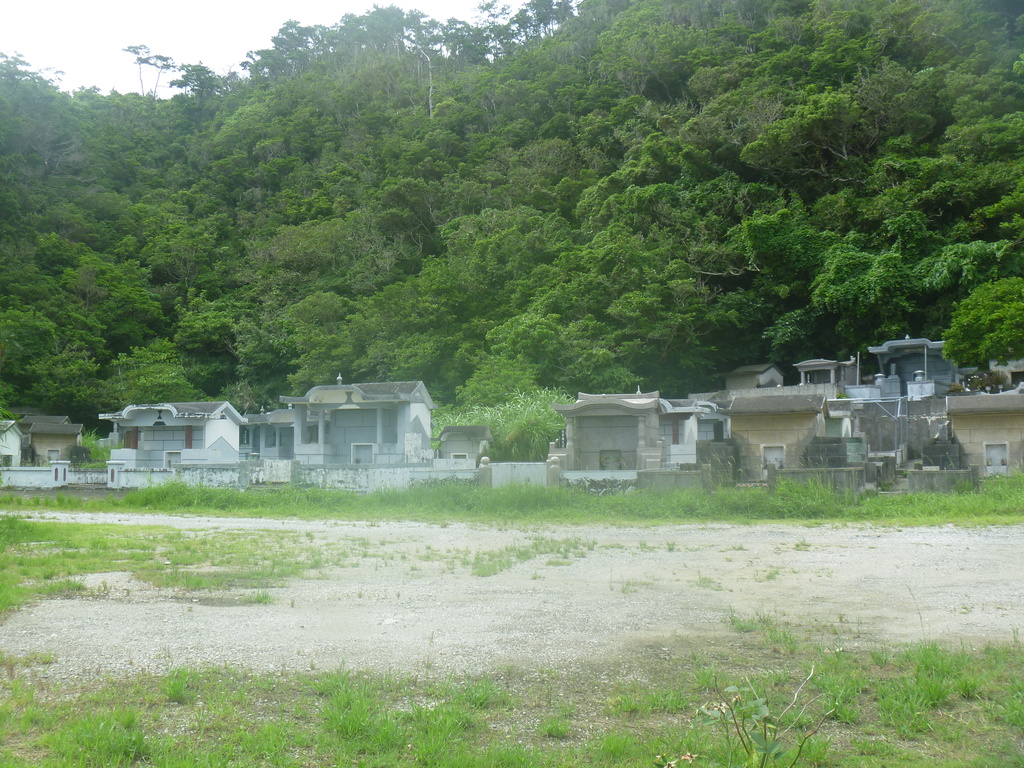A Russian translation by Anastasia Kovalchuchuk of Edubirdie is available here.
Many old tombs in Okinawa were built facing the sea. This is because of the belief that the spirits of the dead would go back [after death] to their original ancestral village [Nirai Kanai] from which also come the gods that bring blessings and fruits.
The tombs of the hamlet of Sedake, in the depths of Oura Bay, are clustered overlooking the sea along the small mountains beyond the village. From their line of vision, nestled in Kusati mountain, the ancestors (uyafafuji) would see Cape Henoko off to the right. In the past, open farm lands stretched out along undulating country to the tip of the promontory, and the mountains beyond supported people’s livelihood, providing them with fuel, charcoal and timber. Oura Bay was the scene of a bustling trade as Yambaru boats came into port to exchange the products of the mountains for the products of the central and southern districts.
The Battle of Okinawa put an end to this. Cape Henoko became a civilian detention camp. Many lives were lost. Afterwards, it became a US Marine Corps facility (Camp Schwab), with munitions stockpile and training site, and the local people were driven away. To this day that remains the case.
And yet the horizon line is intact. However, the plan to conduct wide-scale reclamation on both sides of the Cape for construction of a large new base threatens that horizon. If the spirits of the dead find themselves confronting not Nirai Kanai but hemmed in by a wall of concrete, they will be lost, with nowhere to go. The Osprey’s low frequency noise and the thunder of military aircraft will make things worse for them.
This nightmare must not be allowed to happen. The sea in which the coral blooms and the dugong munch on sea grasses is the source of life and provider of blessings and fruits. I long to free this sea and these hills that give life and sustenance from the yoke of military bases.







